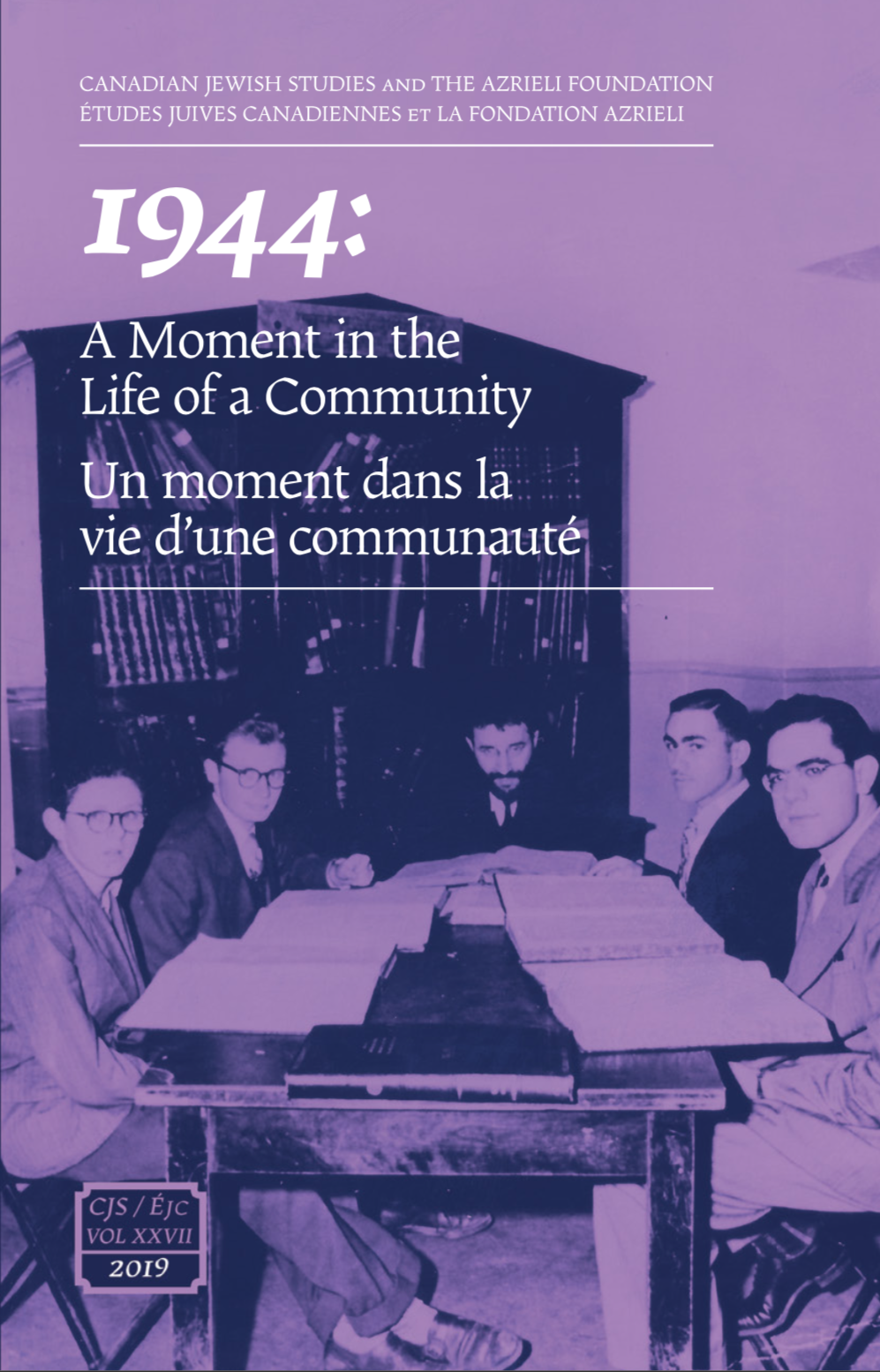Memoirs of a Refugee: The Travels and Travails of Rabbi Pinchas Hirschprung
DOI:
https://doi.org/10.25071/1916-0925.40103Abstract
In October of 1941, twenty-nine rabbis and rabbinical students left Shanghai and eventually arrived in Montreal, under an unusual Canadian government visa program to help Orthodox rabbis. Among these refugees were the future chief rabbi of Montreal, Pinchas Hirschprung, as well as nine shlichim of the Lubavitcher rebbe. This article offers a detailed account of Hirschprung’s journey from his hometown of Dukla, Poland, through Lithuania, Latvia, the Soviet Union, Japan, Shanghai, and the United States, until his arrival in Montreal. Through Hirschprung’s personal experience, the article highlights the complexities and difficulties of searching for refuge during this particular period of the war, prior to the US entry after Pearl Harbor. As well, this article brings together previously untranslated archival and biographical information on the other rabbinical refugees who travelled with Hirschprung including students and teachers from some of the best-known prewar yeshivot of Lithuania and Poland. The article also addresses the tensions between the Orthodox and secular rescue organizations during the Holocaust.References
Aaron Rothkoff, Masmid (1959): 122-25. DOI: https://doi.org/10.1080/03461238.1959.10404773
Bryan Mark Rigg, Rescued from the Reich: How One of Hitler’s Soldiers Saved the Lubavitcher Rebbe (New Haven: Yale University Press, 2004), 38-44.
Efraim Zuroff, The Response of Orthodox Jewry in the United States to the Holocaust: The Activities of the Va’ad Hatzala Rescue Committee, 1939 – 1945 (Hoboken, NJ: Ktav, 2000).
Eli Gottesman, Who’s Who in Canadian Jewry (Montreal: Jewish Institute of Higher Research, Central Rabbinical Seminary of Canada, 1965) 94.
Eliezer Portnoy & Zelig Epstein, Yarchon Mercaz Hatorah - Rabbinic Monthly Journal, 1, no. 1 (Shevat 1942), np.
Eric Shaffer, From Poland to Shanghai: The Story of the Mir Yeshiva’s Survival of World War II, http://history.emory.edu/home/documents/endeavors/volume2/EricSchaffer.pdf (24 March, 2016).
F.C. Blair, Department of Mines and Resources, Ottawa, 5 August 1941.
Fi!y Years: Yearbook of Tomche Temimim Lubavitcher Rabbinical College(Va’ad Tomche Temimim, 1991), 19.
Hapardes, 3-4. [note from Yosef: Vol. 15, no. 8 (November 1941), pp. 3-4?].
Irving Abella & Harold Troper, None is Too Many: Canada and the Jews of Europe, 1933-1948 (Toronto: Lester Orpen & Dennys, 1983).
Israel Medres, Between the Wars: Canadian Jews in Transition, translated into English by Vivian Felsen (Montreal: Véhicule Press, 2003), 124.
Martin Gilbert, The Holocaust: The Jewish Tragedy (London: Harper-Collins, 1986) 101.
Oscar Z. Rand, Toldoth Anshe Shem, Volume I (New York: Toldoth Anshe Shem, Inc., 1950), 63.
Paula Draper and Harold Troper, Archives of the Holocaust: An International Collection of Selected Documents, Vol. 15, (New York: Routledge, 1991), 79-80.
Pinchas Hirschprung, Fun Natsishen Yomertol: Zikhroynes fun a Polit (Montreal: Eagle Publishing, 1944) 7.
Pinchas Hirschprung, The Vale of Tears, translated into English by Vivian Felsen (Toronto and Montreal: Azrieli Foundation, 2016).
Rand, Toldoth Anshe Shem, Volume I, 39.
Sidney M. Bolkosky, Harmony & Dissonance: Voices of Jewish Identity in Detroit, 1914-1967(Detroit: Wayne State University Press, 1991) 401.
Yitzchak Alfasi, Haḥasidut Midor Ledor, Vol. 1, Me-ha-Besht ve-ad Ledor Haḥamishi(Jerusalem: Machon Da’at Yosef, 1995) 38 and 40.
http://www.yivoencyclopedia.org/article.aspx/Lewin_Brothers (6 October 2017).
Downloads
Published
How to Cite
Issue
Section
License
Canadian Jewish Studies/ Études juives canadiennes is a journal dedicated to the open exchange of information; therefore the author agrees that the work published in the journal be made available to the public under a Creative Commons Attribution-Noncommercial-No Derivative Works 4.0 Unported License. The publisher (Association for Canadian Jewish Studies / Association d'études juives canadiennes) recognizes the author's intellectual property rights; authors retain copyright over their work. The author grants the publisher first serial publication rights and the non-exclusive right to mount, preserve, and distribute the intellectual property. The journal is digitized and published on the open access website http://pi.library.yorku.ca/ojs/index.php/cjs/index.







